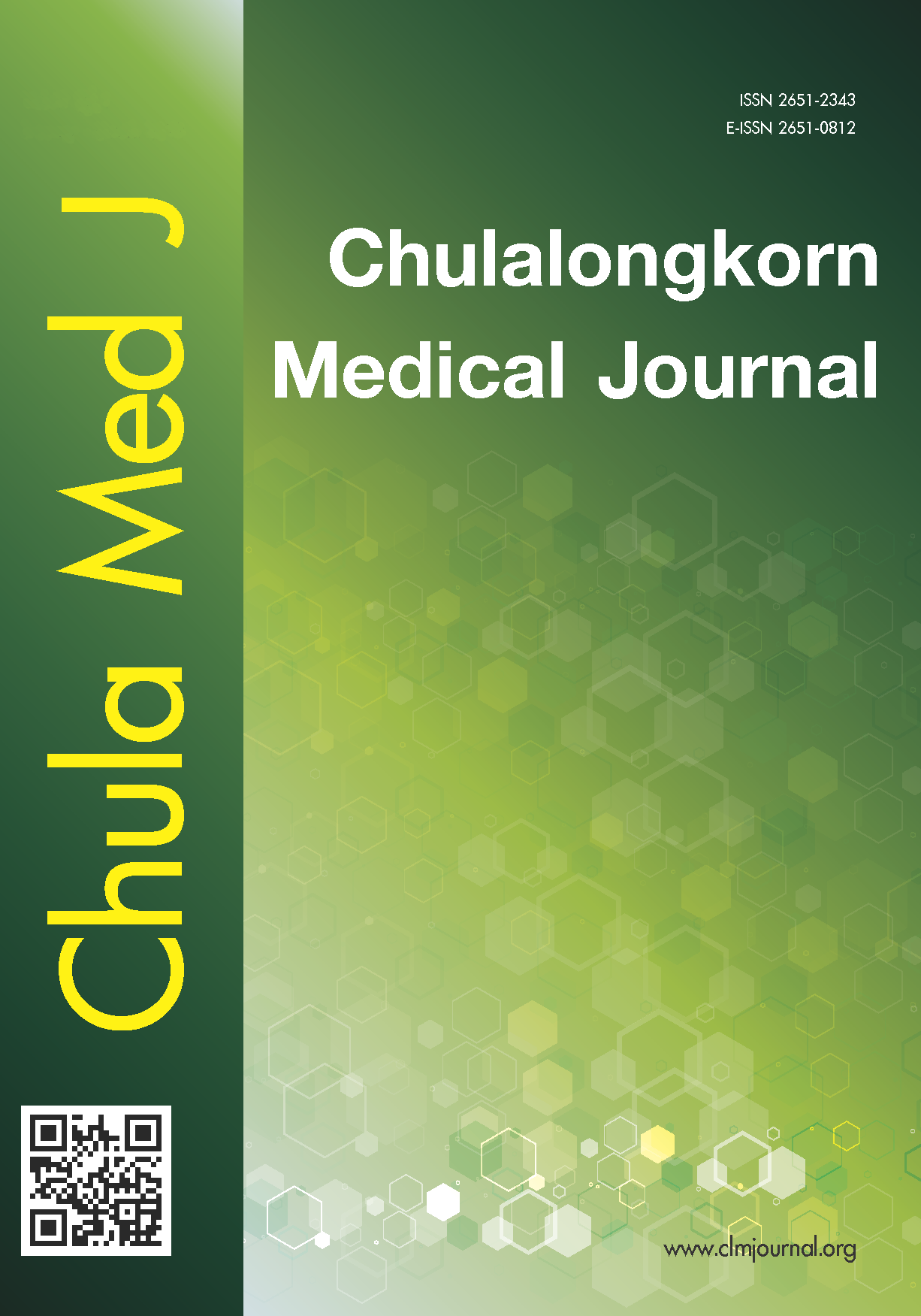Pediatric respiratory severity score evaluates disease severity of respiratory tract infection in children
Main Article Content
Abstract
Background: Acute respiratory infections (ARIs) are commonly found causes of morbidity and mortality in
children aged below 5 years old. The pediatric respiratory severity (PRESS) score is a simple severity scoring
system. Healthcare providers can apply it as a preliminary patient assessment for proper treatments.
Objective: To evaluate the pediatric respiratory severity score as a severity assessment for pediatric patients with acute respiratory infections.
Methods: This is a prospective study from 1st September 2016 to 31st October 2017. The study group includes
120 patients aged 3 months to 14 years old. The use of the PRESS score as an assessment tool has 5 parameters: respiratory rate, wheezing, accessory muscle use, peripheral oxygen saturation (SpO2), and feeding difficulties, and can be classified into 3 groups: mild (score of 0 or 1), moderate (score of 2 or 3), and severe (score of 4 or 5). The primary outcomes are sensitivity, and specificity for hospitalization. The secondary outcomes are sensitivity, specificity of intensive care unit (ICU) admission, mean and standard deviation of the duration of oxygen therapy and nebulized bronchodilator.
Results: The admitted regular patients in the moderate and severe groups had a sensitivity of 0.94 and a specificity of 0.88, whilst the ICU patients in the severe group had a sensitivity of 0.75 and a specificity of 0.66, longer duration for oxygen treatment, and longer duration for nebulized bronchodilator treatment. Furthermore, this system is more reliable than previous respiratory severity score.
Conclusions: PRESS scores could predict condition severity and might guide a proper treatment of acute
respiratory infection in children.
